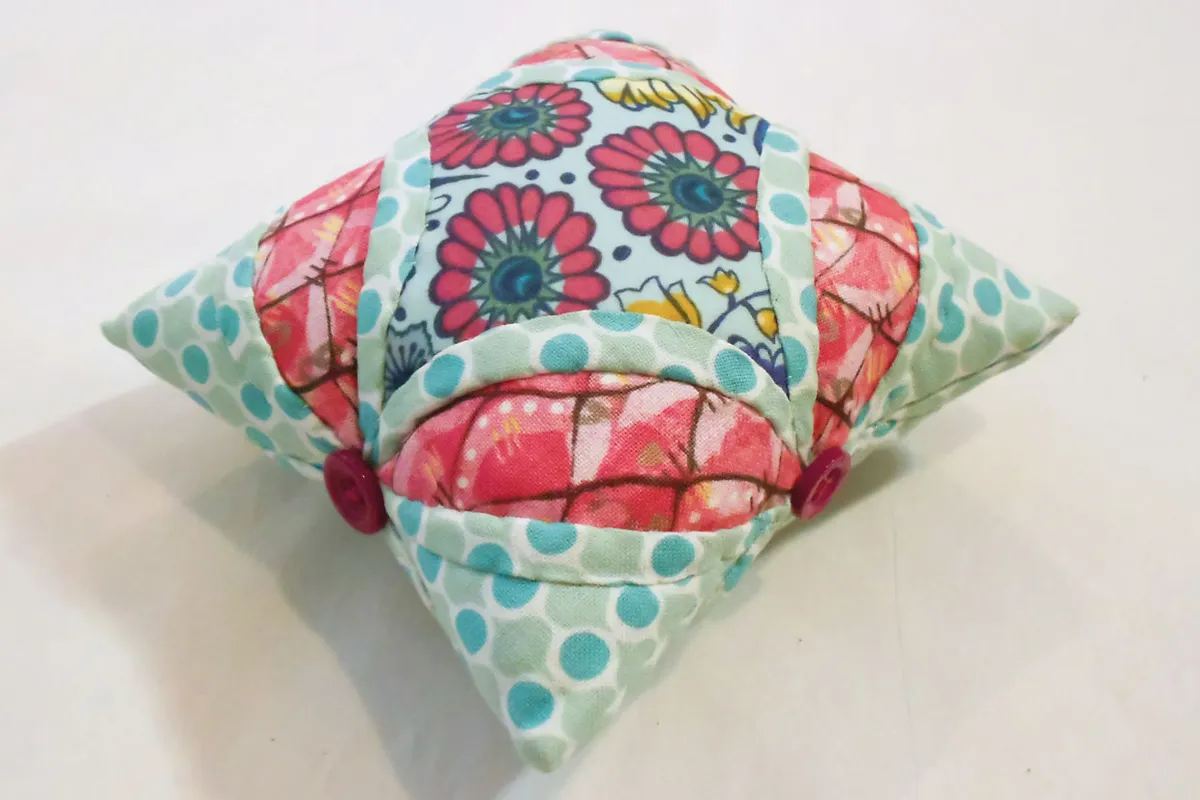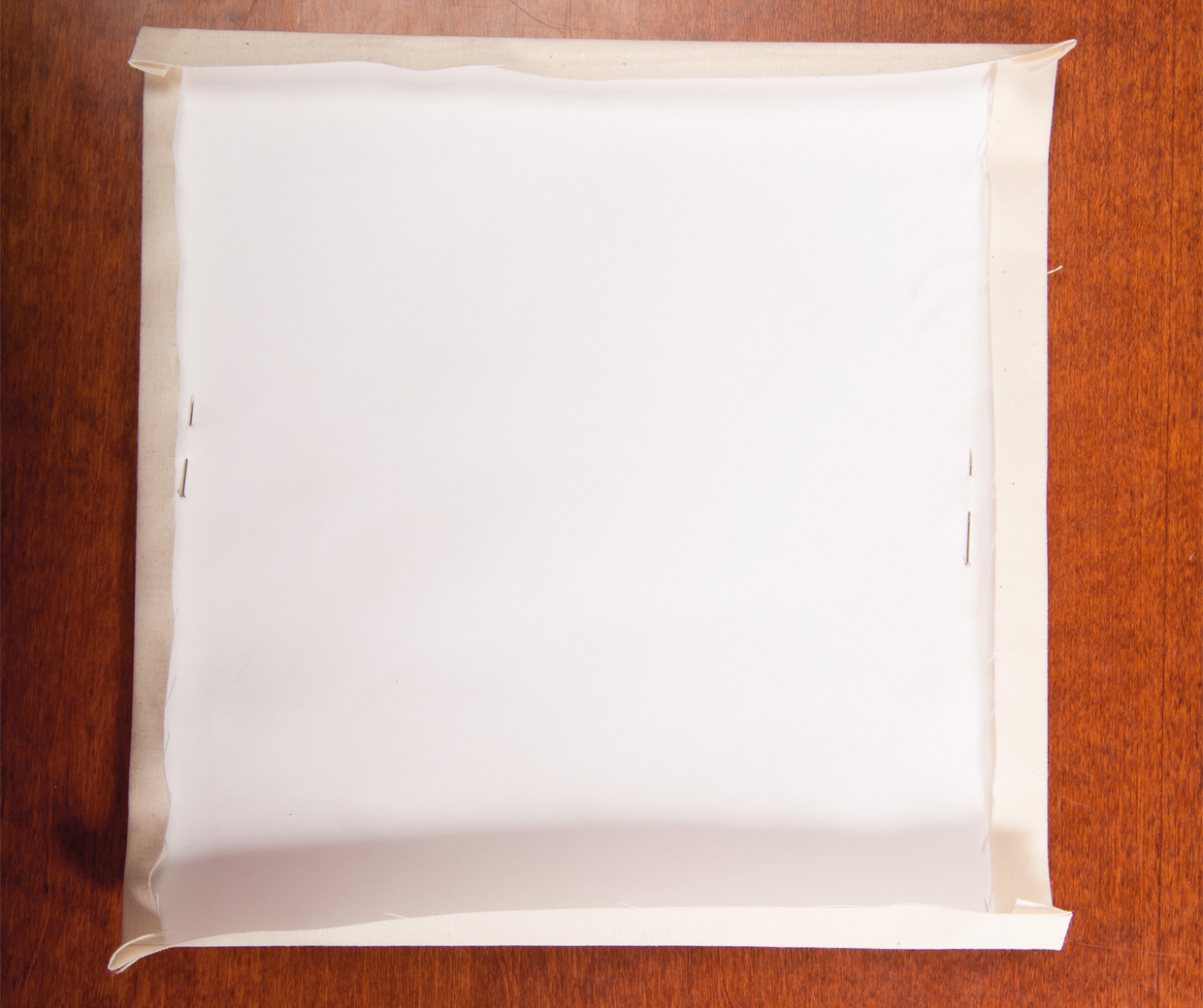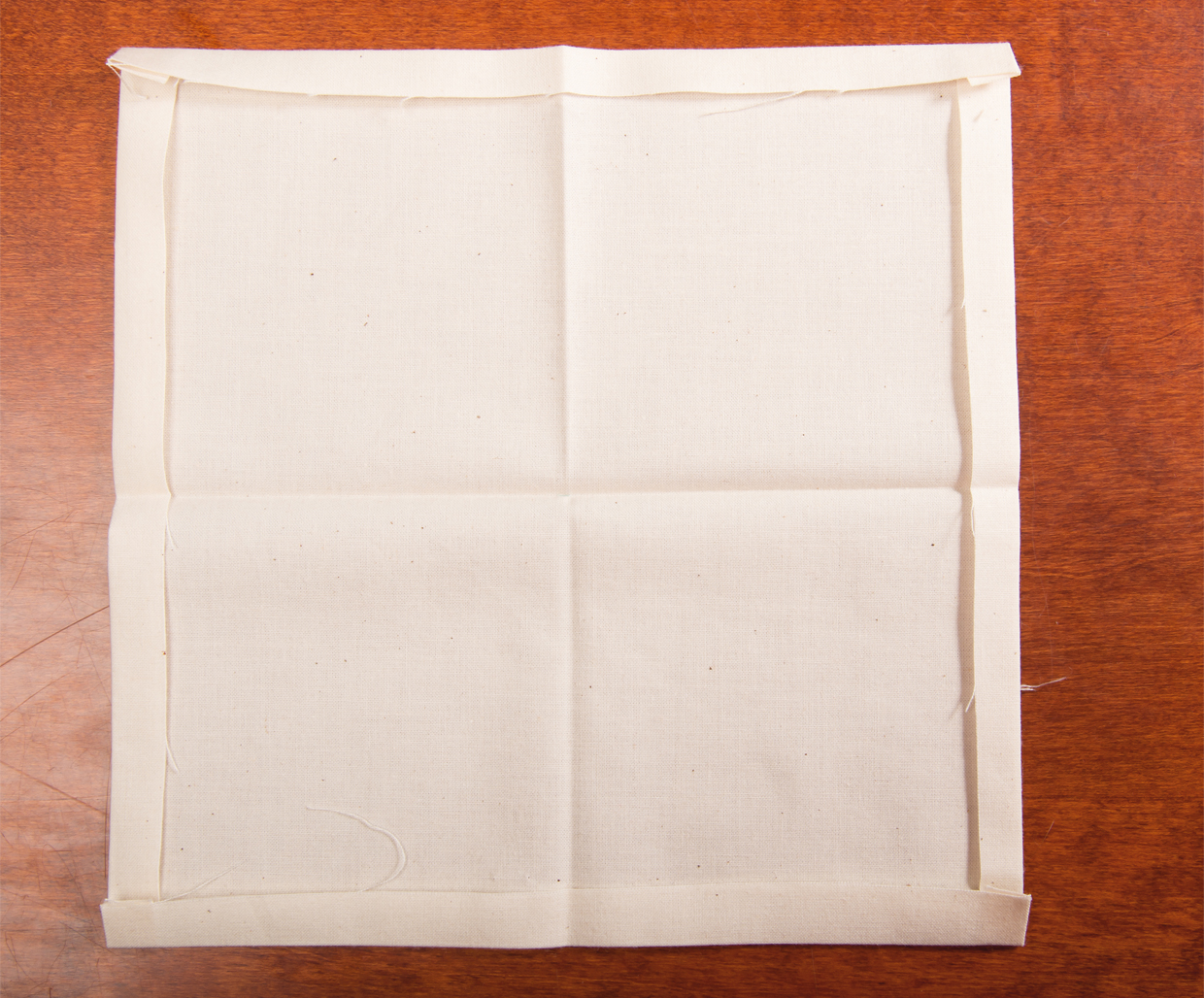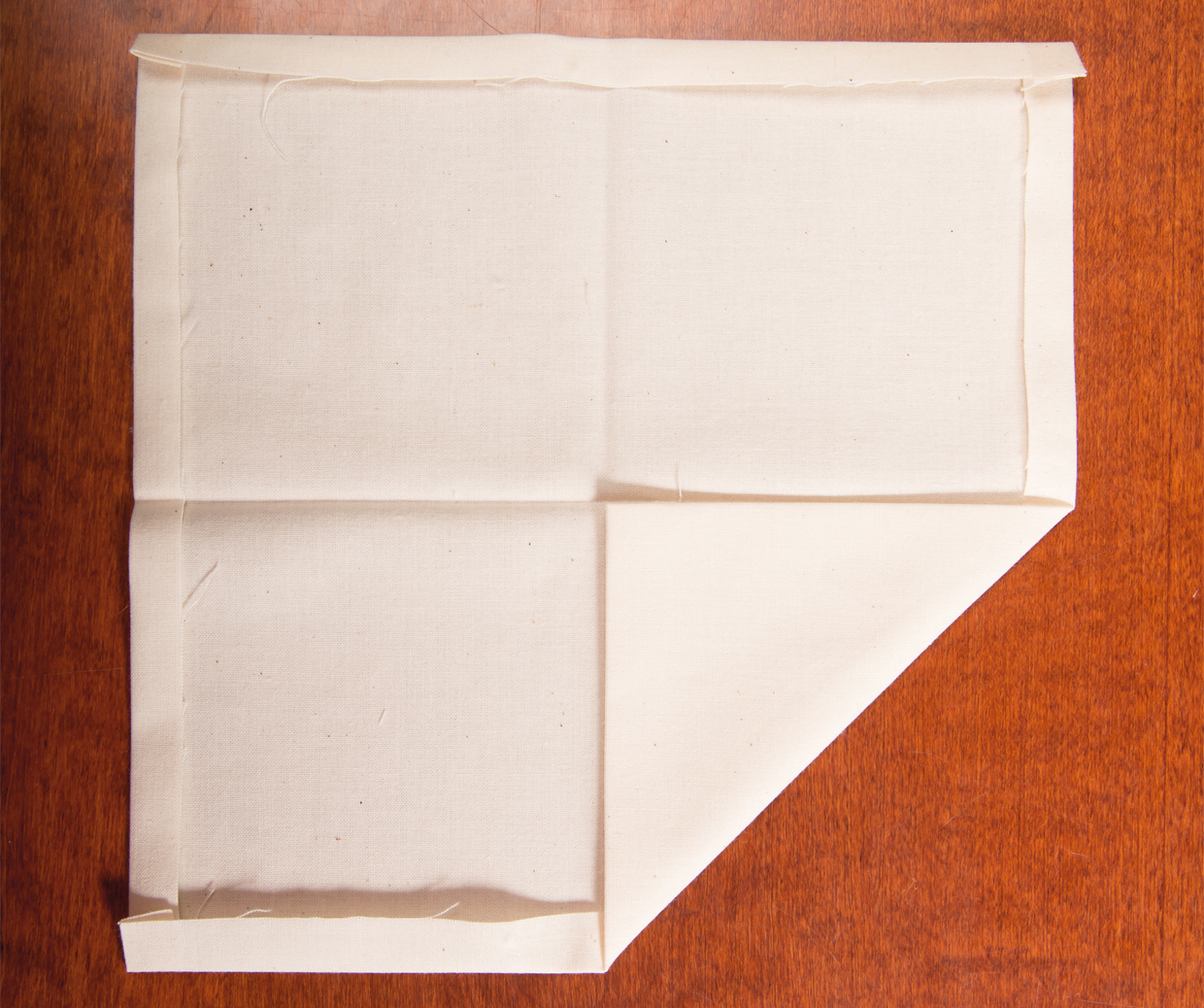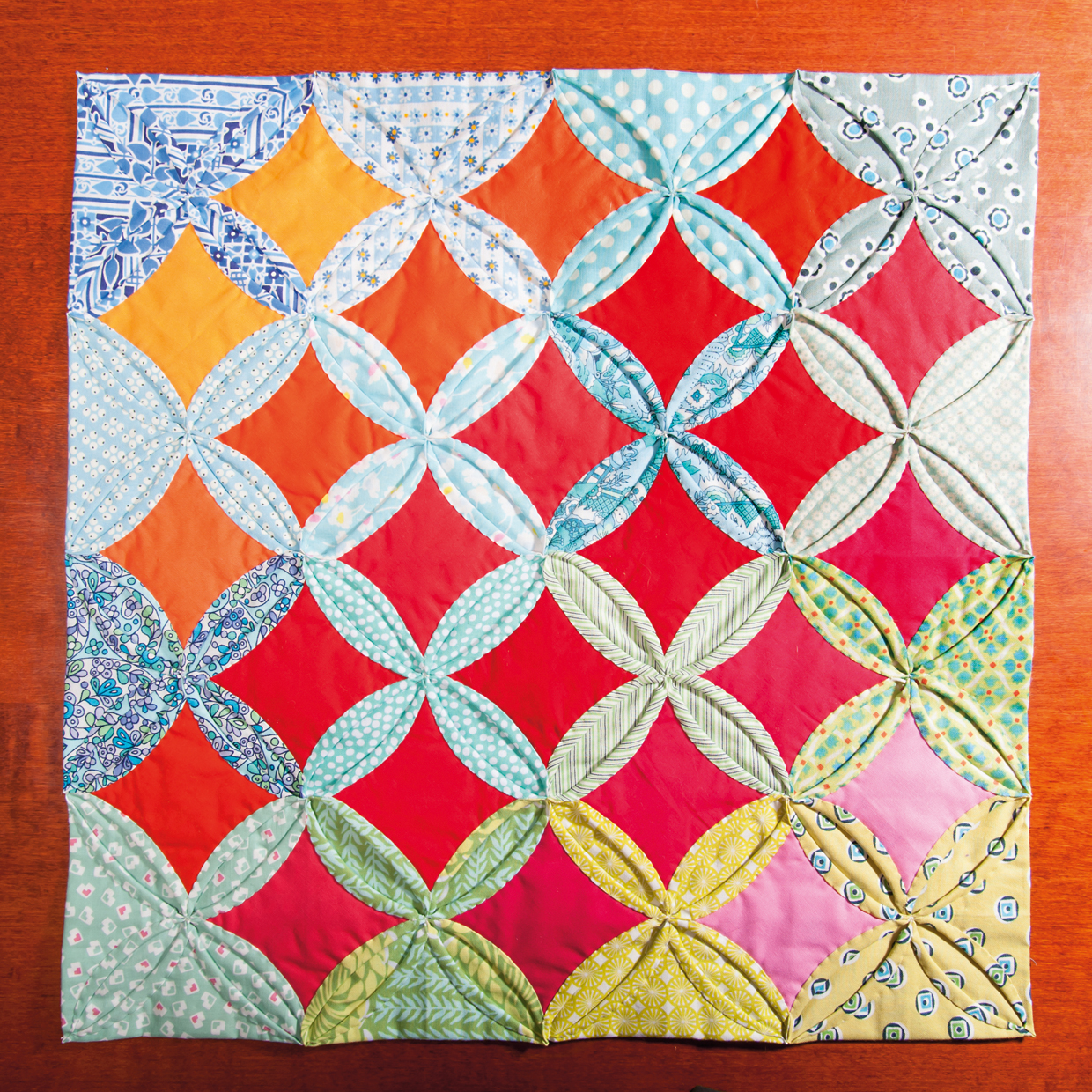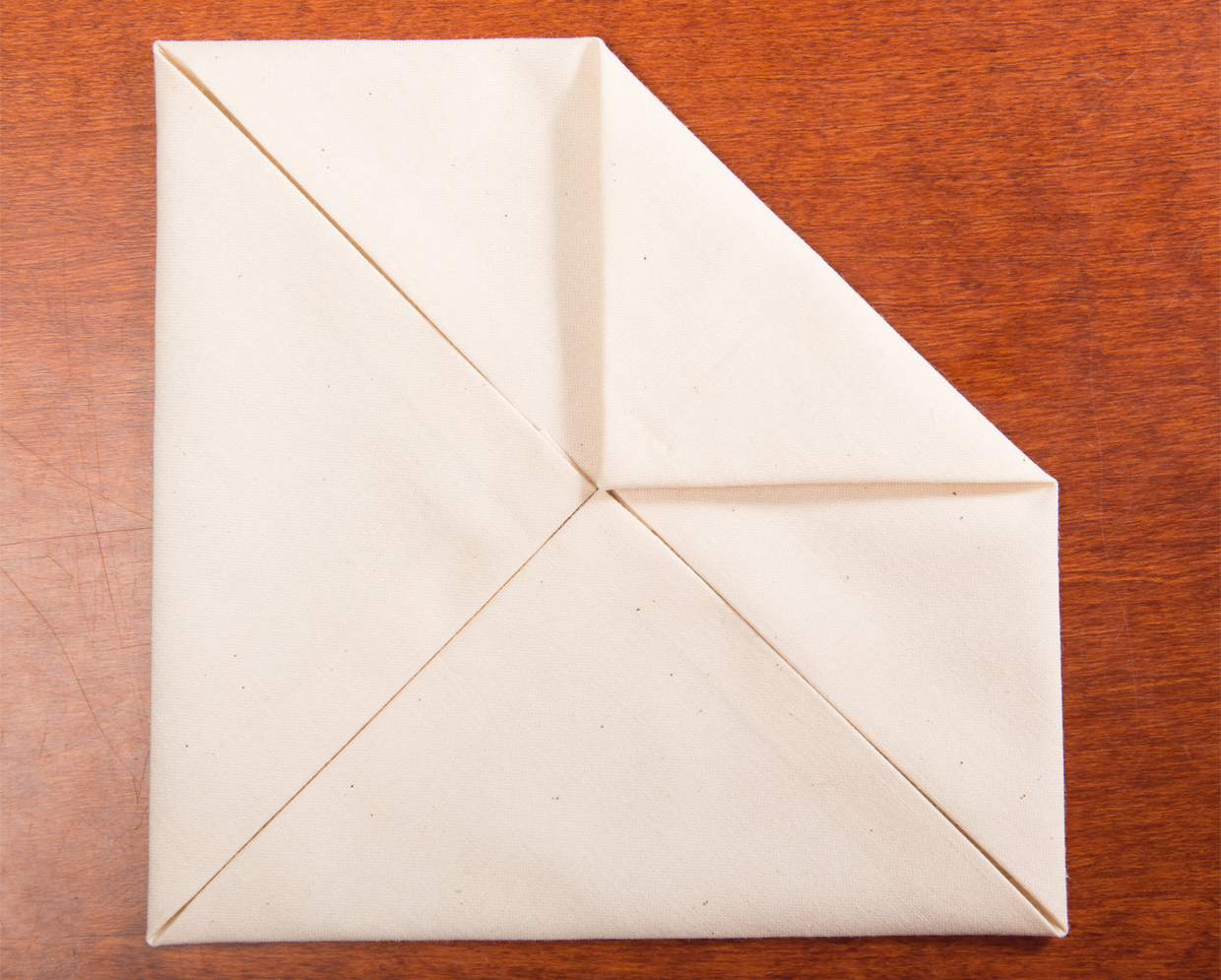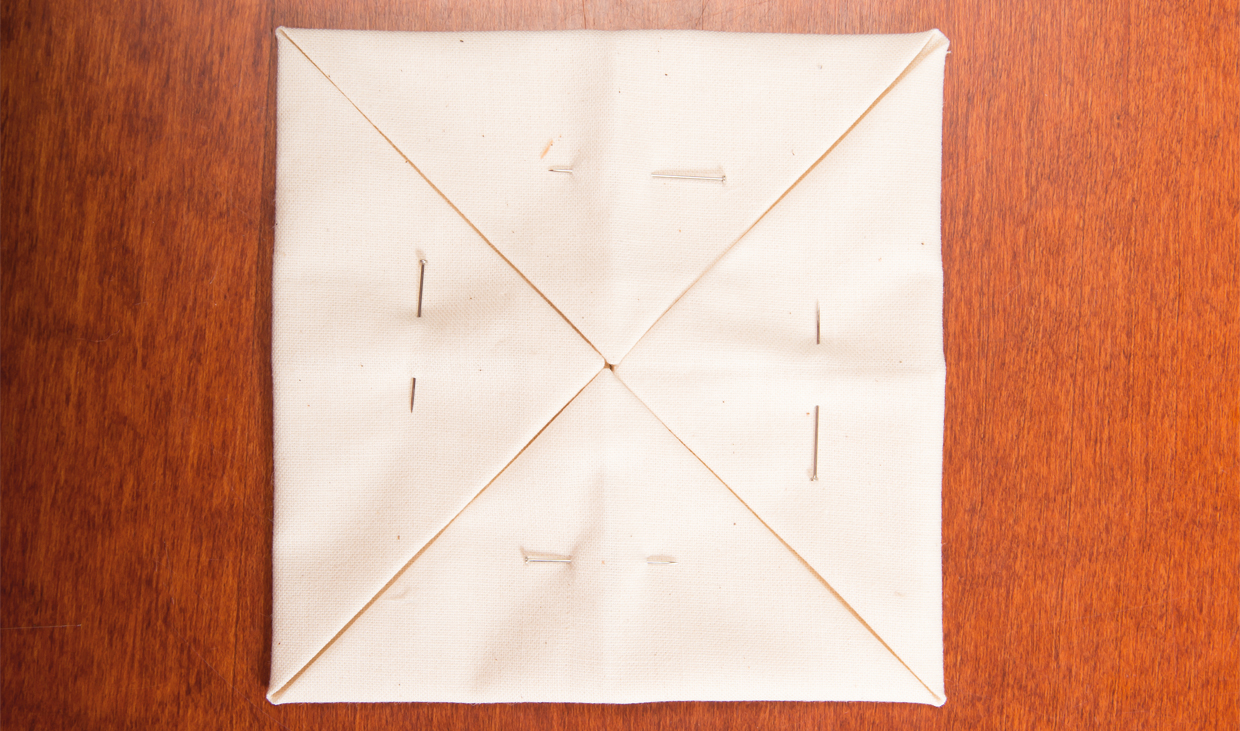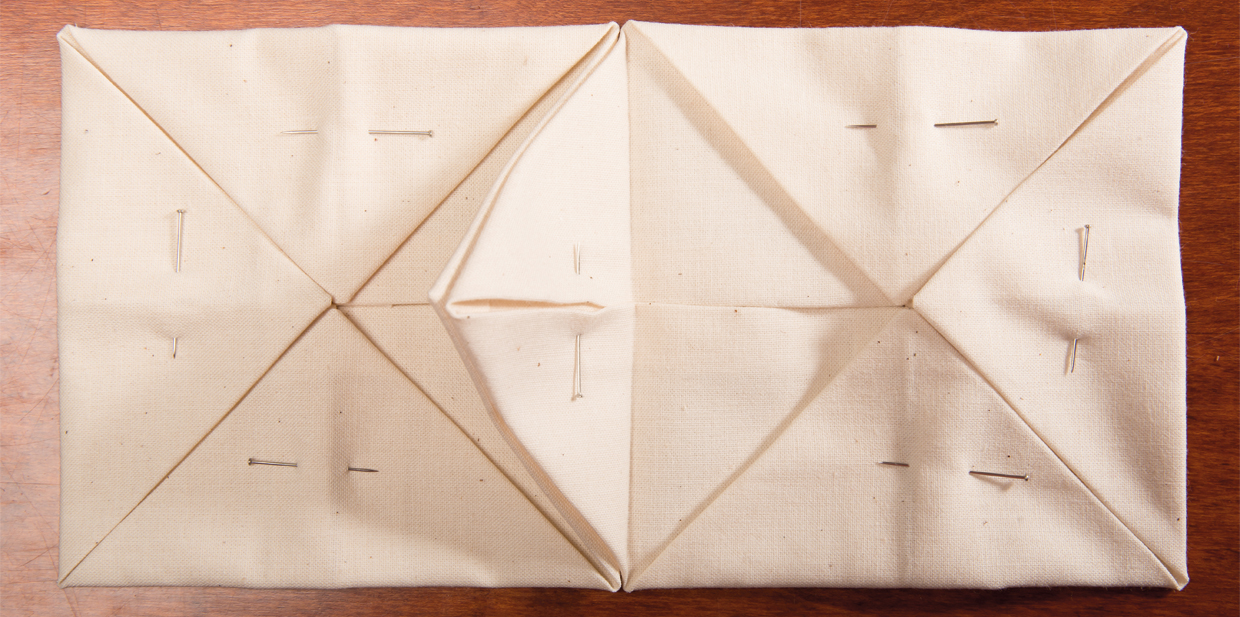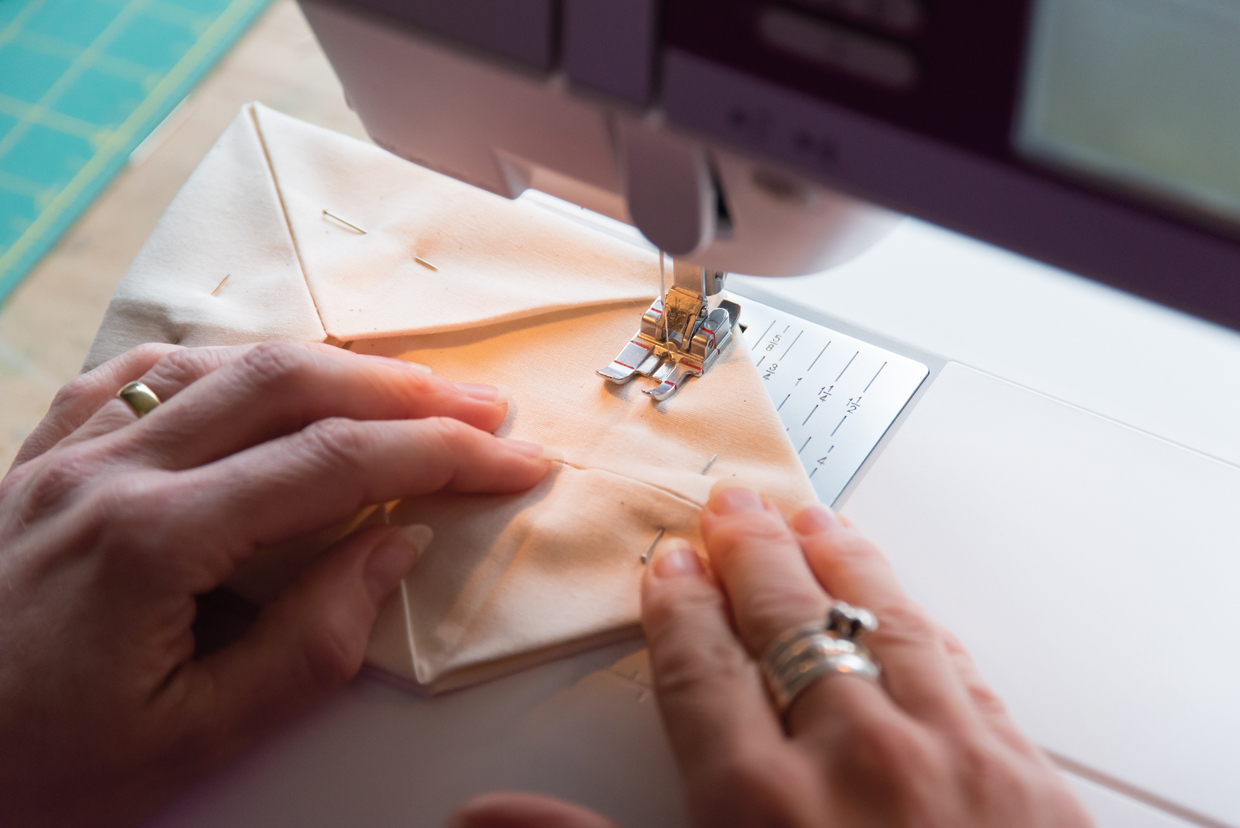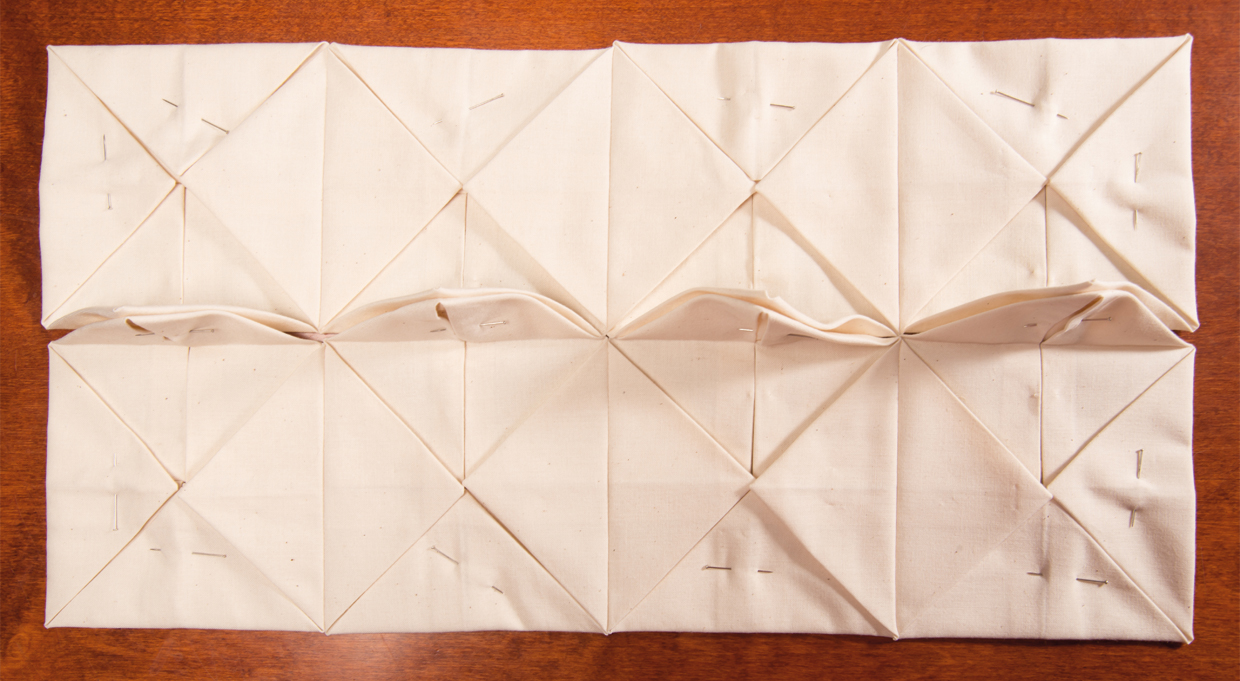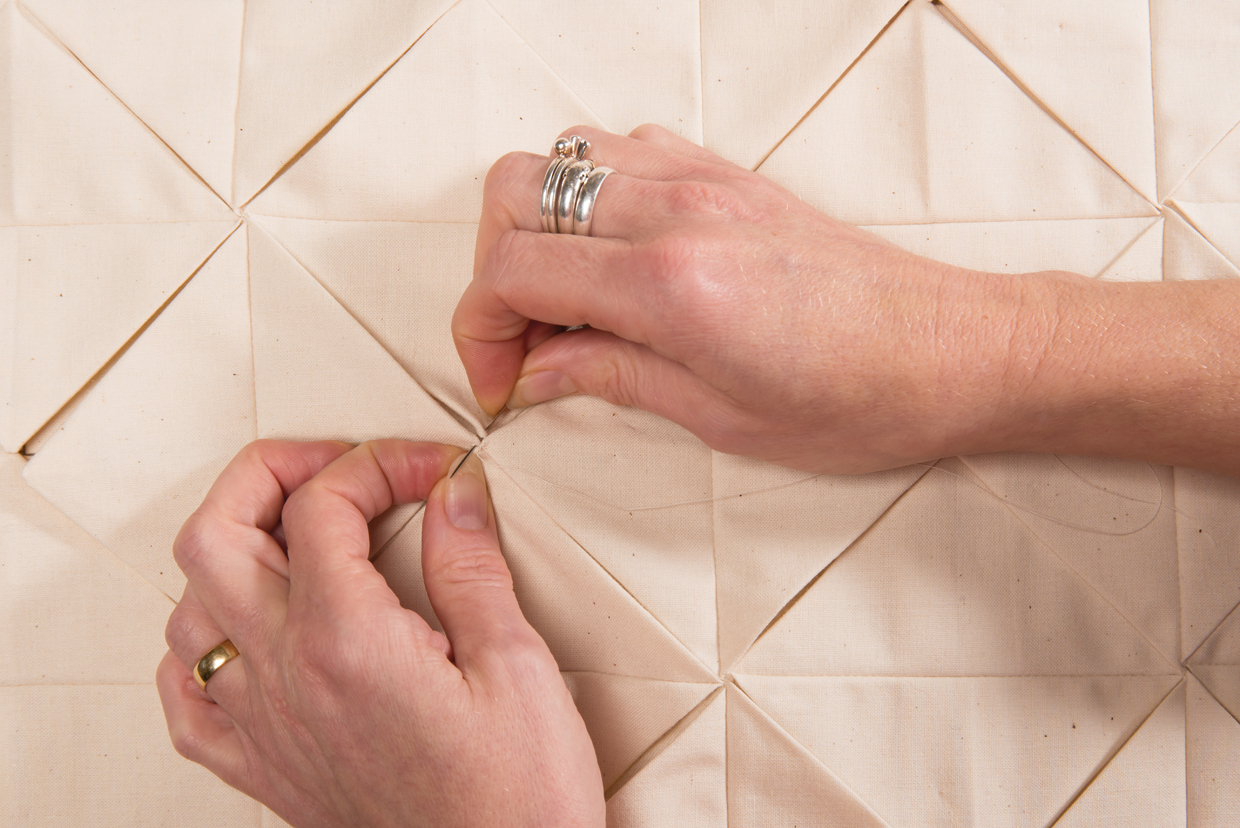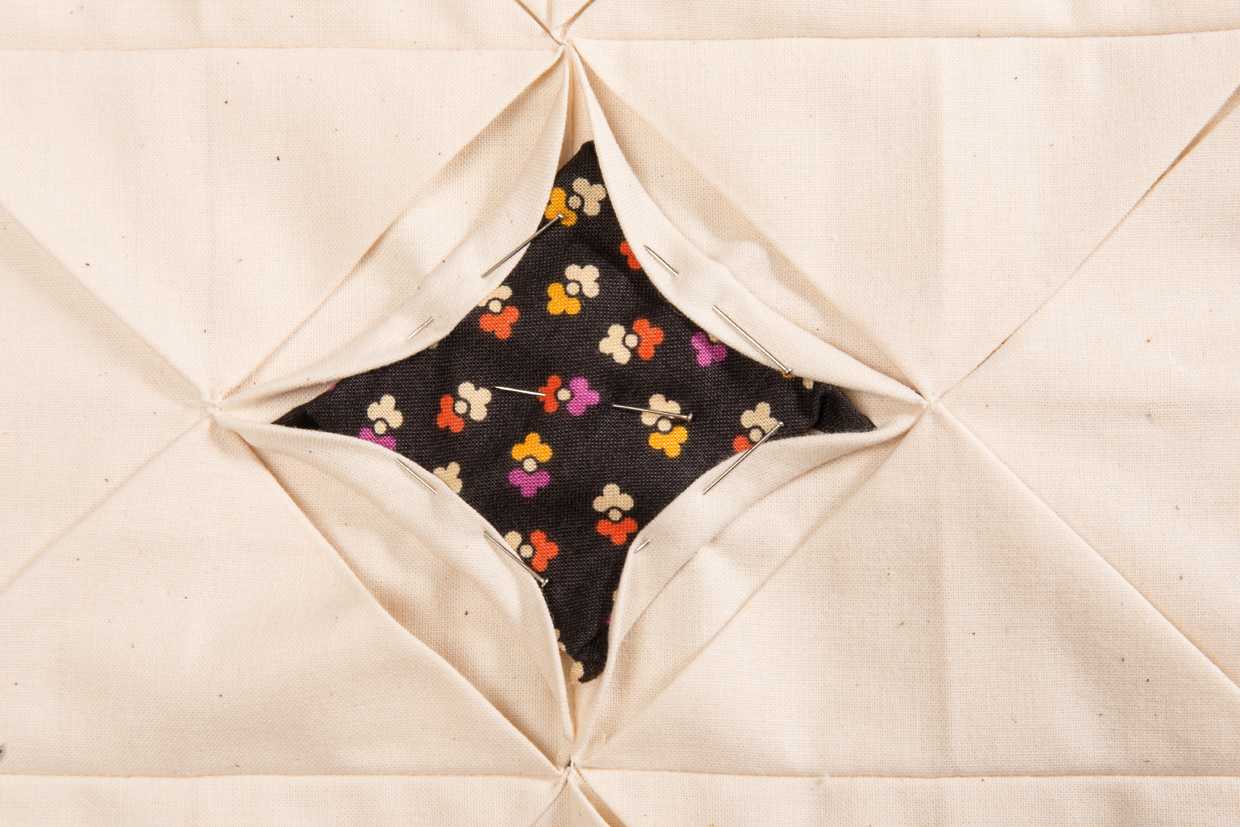Cathedral window quilt blocks may seem laborious due to all the folding and pressing, but as Jo Avery shows, this technique means no basting or quilting is required, so it’s actually a pretty speedy way to make a really striking quilt or cushion!
Just two Cathedral Window blocks sewn back-to-back make a charming pincushion. Why not fill the windows with precious scraps of vintage embroidery, or hand embroider a few little lazy daisies. Buttons can be added at the intersections for extra interest (and to any hide messy stitches!).
